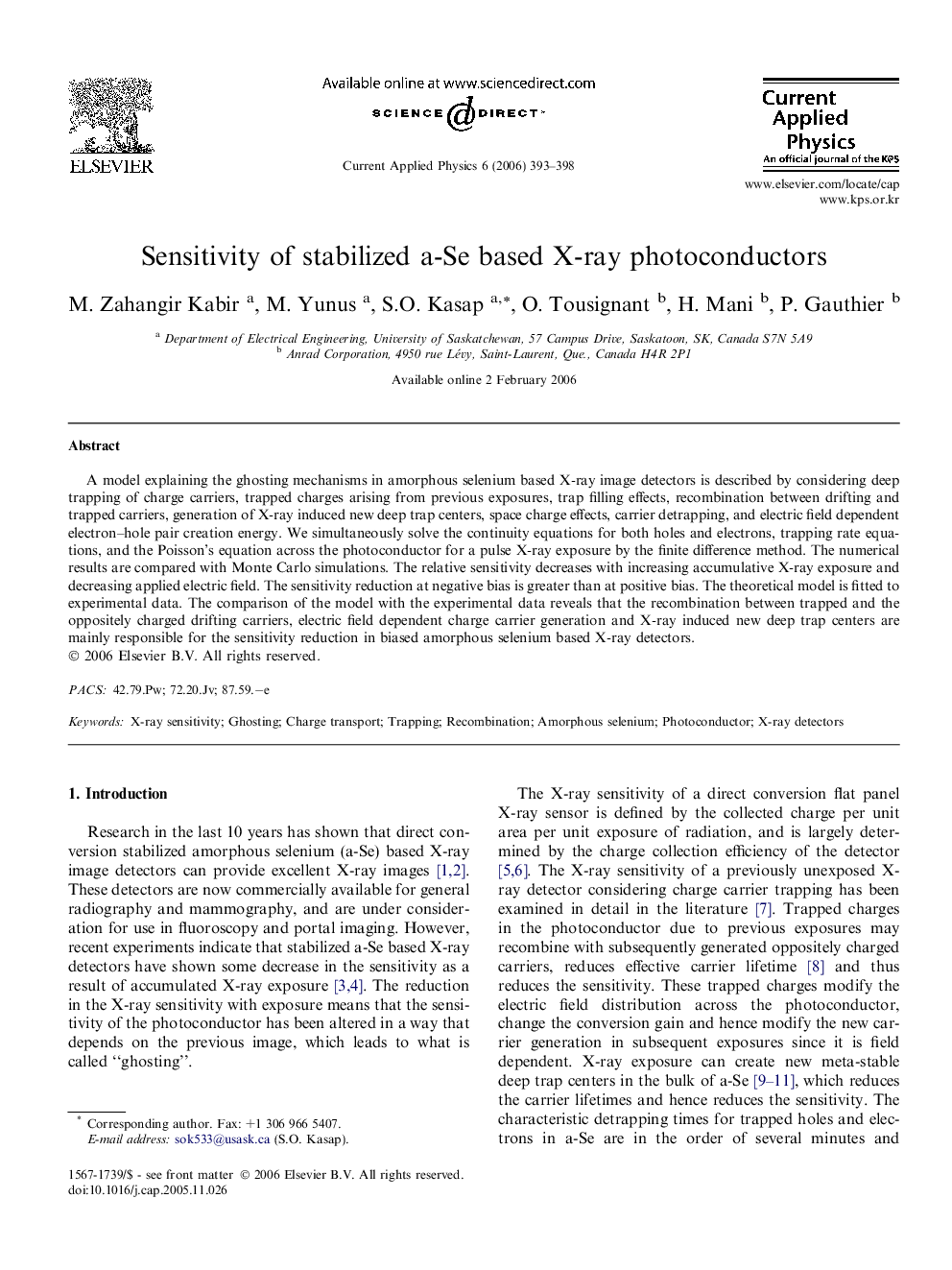| Article ID | Journal | Published Year | Pages | File Type |
|---|---|---|---|---|
| 1787972 | Current Applied Physics | 2006 | 6 Pages |
A model explaining the ghosting mechanisms in amorphous selenium based X-ray image detectors is described by considering deep trapping of charge carriers, trapped charges arising from previous exposures, trap filling effects, recombination between drifting and trapped carriers, generation of X-ray induced new deep trap centers, space charge effects, carrier detrapping, and electric field dependent electron–hole pair creation energy. We simultaneously solve the continuity equations for both holes and electrons, trapping rate equations, and the Poisson’s equation across the photoconductor for a pulse X-ray exposure by the finite difference method. The numerical results are compared with Monte Carlo simulations. The relative sensitivity decreases with increasing accumulative X-ray exposure and decreasing applied electric field. The sensitivity reduction at negative bias is greater than at positive bias. The theoretical model is fitted to experimental data. The comparison of the model with the experimental data reveals that the recombination between trapped and the oppositely charged drifting carriers, electric field dependent charge carrier generation and X-ray induced new deep trap centers are mainly responsible for the sensitivity reduction in biased amorphous selenium based X-ray detectors.
